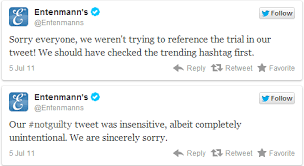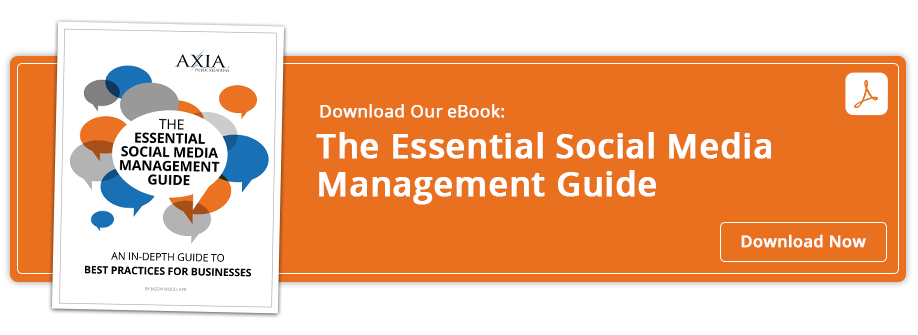Platform-native posts: What do social media managers need to know?
By Axia Public RelationsMarch 8, 2023
Learn how to reach your target audience on socials.
 When posting to your company’s social media pages, it’s easy to copy and paste the same content between multiple platforms. But this can actually hurt your social media growth — but why?
When posting to your company’s social media pages, it’s easy to copy and paste the same content between multiple platforms. But this can actually hurt your social media growth — but why?
Not every audience is the same. For example, the audience you speak to on Instagram is drastically different from the audience you speak to on Twitter. From age and demographic difference to content format, there are hundreds of factors that differ your viewers. These audiences are receptive to different voices and tones, so it is important to understand what to post and where to post it.
Audio: Listen to this article.
This concept is often referred to as posting “native to the platform.”
Here’s how we understand some popular online platforms and their most common users.
With the average Instagram user in their 20s, the platform tends to take a professional, yet playful tone. Posts on this platform need to accomplish two main goals:
- Use unique imaging and word choice to entice the viewer to click onto your page.
- Give the user enough information about your brand to encourage them to make an informed purchasing decision.
Many times before a consumer decides to purchase a product or service, they will search the brand’s social media. This is where you can turn a potential customer into a first-time buyer. Your company’s Instagram account should show who you truly are as a brand, from the values your company has to the products and services you provide, to the ways you interact with your customers in the comment sections.
Facebook is relatively similar to Instagram. The goal of this platform is to encourage users to click from your initial post on their feed to your main profile page. Engaging users with outside-the-box wording and photos in your posts can be key to getting them onto your profile page. Posts on Facebook should be intriguing and informational, making the viewer want to learn more.
The footwear company Converse went viral on Facebook after posting about the love it has for its customers. It matched the caption with an image of one of its bestselling pairs of shoes with a handwritten message on them that read, “We Make a Great Pair.” The combination of this image with the emotional caption appealed to viewers and gave them a connection with the company.

Twitter is known to have a more energetic, edgy appeal. The platform is a place for real-time conversations and banter. Brands can use this to their advantage through friendly and conversational interactions with their audience. The use of hashtags can connect your company with people talking about the same topic from all over the world. While these conversations can and should be comedic and engaging, they still need to be respectful to avoid going viral for the wrong reasons.
The popular baked goods company Entenmann's attempted to enter a conversation on Twitter using a hashtag that was trending at the time. Instead, it used a hashtag that was being used to discuss an ongoing murder trial. The company had the right idea to join a trending conversation, but proved just how important it is to fully understand what you are posting before sending it out.


A company’s LinkedIn page should be its most professional account. The platform’s goal is to connect professionals all around the world. The majority of LinkedIn users are 25-34 years old and accounts for half of all U.S. adults with college degrees. This is the platform to talk specifically about recent achievements, possible job openings, and company updates. LinkedIn does not foster an environment for much conversion — other than the occasional response in the comment section of their posts — so posts on this platform ideally give viewers plenty of straightforward information. Their wording should be concise and straight to the point.
TikTok
TikTok’s average audience is younger than most other platforms. With TikTok’s main users aged between 10 and 19 years old, brands need to speak directly to this audience by shifting their professional tone to be more trendy. Keeping up with the ever-changing fads can help your brand go viral — which is the overall goal of being on TikTok. Incorporating comedic banter into your videos and captions can be the key to gaining an audience on this platform. Posts on here should be playful, interactive, and on trend.
Not sure how all the pieces fit together in a rapidly changing digital landscape? Our team stays one step ahead to help you conquer tomorrow. Talk to us about how we can help.
Photo by Christina Morillo
Topics: shared media, social media


Comment on This Article